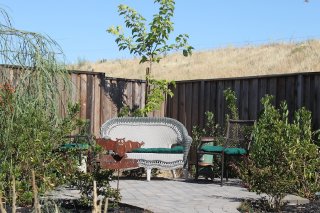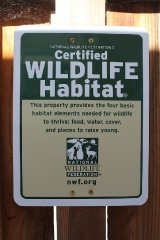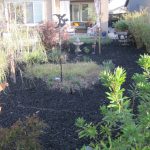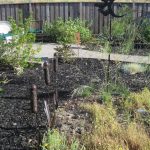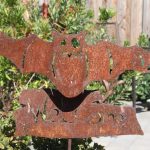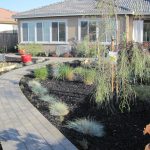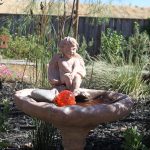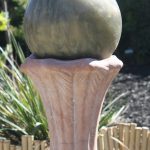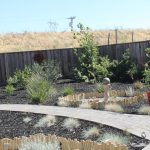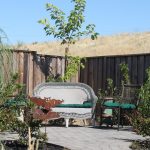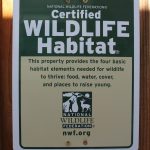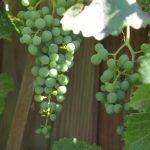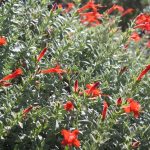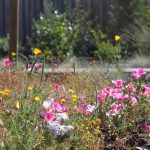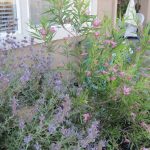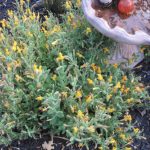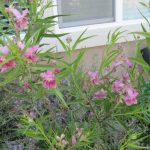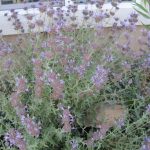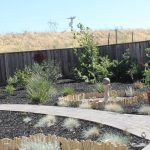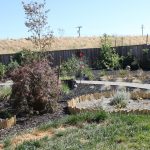Lot size: 3,000 sq. ft. back garden, 85% native
Garden Age: Garden was installed in stages, beginning in 2011
Years on the Bringing Back the Natives Garden Tour: New this year!
Showcase Feature
Carolee went to her first native plant sale in 2000—and she was hooked; native plants’ value to wildlife, their drought-resistance, and the sense of place that natives provide enchanted her. Not surprisingly, when Carolee moved into her new house a few years ago the back garden, then a blank slate, soon became home to a variety of native plants that could tolerate Oakley’s hot and windy summers. Now, the perimeter of the garden is lined with flannel bush, California lilac, toyon, and red-twigged dogwood. A plethora of perennials, grasses and shrubs, such as fescues, penstemon, and western spice bush, are slowly filling in this large back garden. A small meadow is planted with a medley of spring wildflowers, including baby blue eyes, goldfields, clarkia, and poppies.
Desert willow and sages border the back of the house, their pink and purple blossoms attracting hummingbirds and native bees.
- Rogers Red grape softens the fence line.
- The bright red, tubular flowers of the native fuchsia can be seen throughout the summer, attracting hummingbirds, and brightening the garden until fall.
Gardening for Wildlife
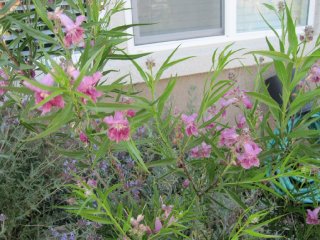
Nectar plants for hummingbirds, a bird bath, plants of varying heights, and bird feeders attract a variety of birds, including red-winged black-birds, doves, and gold and house finches. Blue-bellied lizards bask in the sun.
Garden Talks
11:00 and 2:00 “Lower your water bill! Attract birds and pollinators to your garden! In other words, How to select native plants that will thrive in Oakley’s hot, windy summers” by Carolee James


